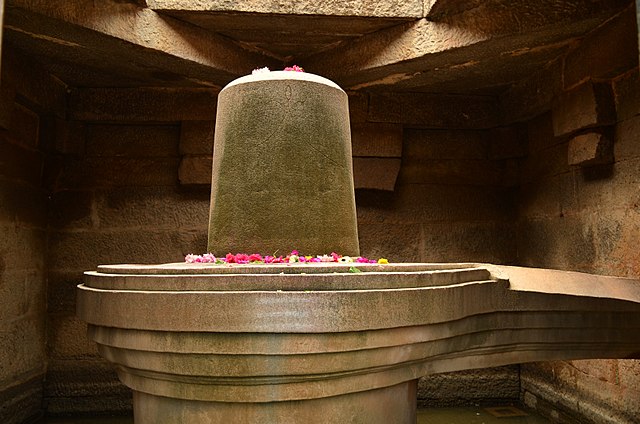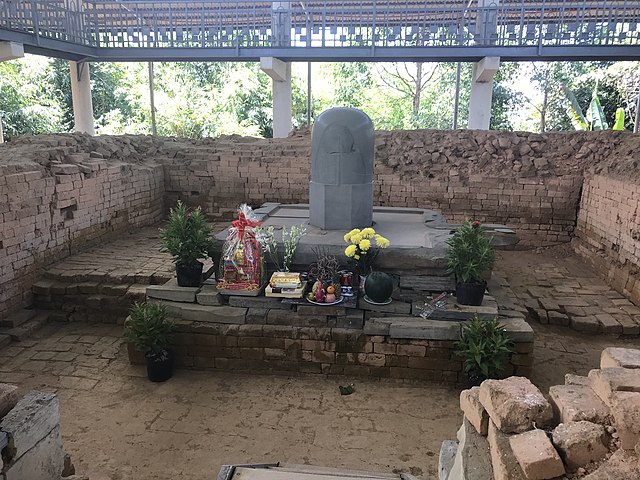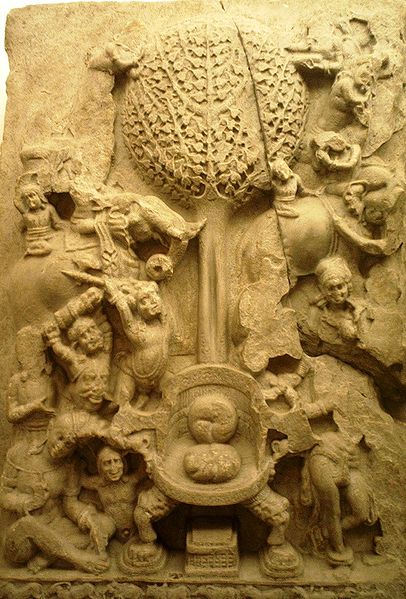A lingam, sometimes referred to as linga or Shiva linga, is an abstract or aniconic representation of the Hindu god Shiva in Shaivism. It is typically the primary murti or devotional image in Hindu temples dedicated to Shiva, also found in smaller shrines, or as self-manifested natural objects. It is often represented within a disc-shaped platform, the yoni – its feminine counterpart, consisting of a flat element, horizontal compared to the vertical lingam, and designed to allow liquid offerings to drain away for collection. Together, they symbolize the merging of microcosmos and macrocosmos, the divine eternal process of creation and regeneration, and the union of the feminine and the masculine that recreates all of existence.
A lingam with tripundra, projected on a yoni base
Badavlinga, Hampi (Vijayanagara Empire)
Stone lingam and yoni pedestal found in Cát Tiên, Vietnam, circa 8th century. At 2.1 meter tall, this is the largest lingam ever found in Southeast Asia
A Buddhist stupa (above) may have influenced the later iconography of the Hindu Shiva-linga, according to Swami Vivekananda.
Aniconism is the cultural absence of artistic representations (icons) of the natural and supernatural worlds, or it is the absence of representations of certain figures in religions. The prohibition of material representations may only extend to a specific supreme deity, or it can encompass an entire pantheon, it can also include depictions of a prophet, saints, or sages, or even depictions of living beings and anything in existence generally. It is generally codified by religious traditions and as such, it becomes a taboo. When it is enforced by the physical destruction of images, aniconism becomes iconoclasm.
An aniconic representation of Mara's assault on the Buddha, 2nd century CE, Amaravati, India.
Traditional flower offering to the aniconic Shiva linga in Varanasi
Persian miniature painting from the 16th century AD, depicting Muhammad, his face veiled, ascending on the Buraq into the Heavens, a journey known as the Mi'raj.
Detail of Dayenu in the Birds' Head Haggadah








